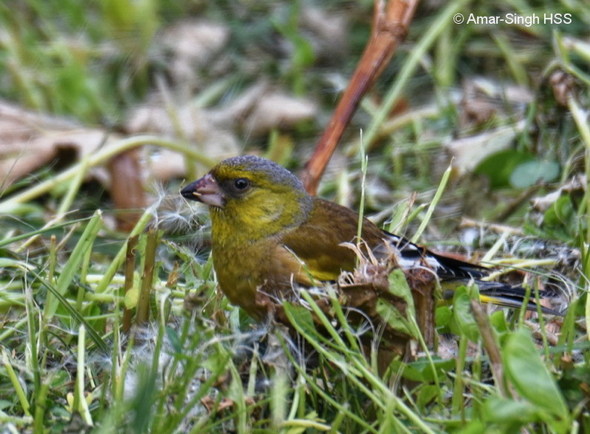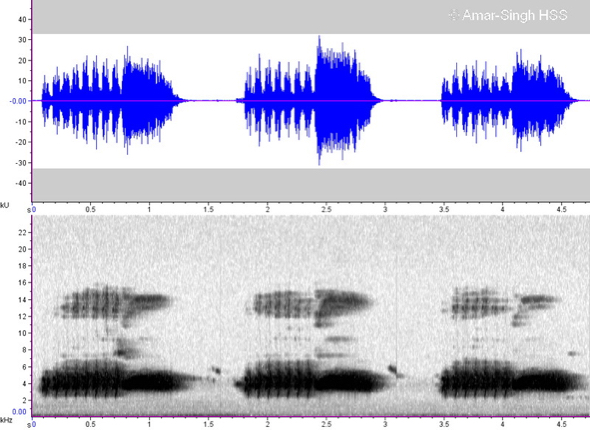“We saw many Grey-capped Greenfinchs (Carduelis sinica kawarahiba), which are also called the Oriental Greenfinch. Brazil (2018) states that the C. s. kawarahiba subspecies breeds in Hokkaido. The birds shown in above and below are males with a clear grey crown and nape. The image below shows a common feeding behaviour on the ground; here taking the seeds of the Dandelion (Taraxacum).
“The image below is of a bird (unsure male or female) singing its heart out as they are apt to do on the top of a high perch.
“The sonogram and waveform of a short segment of the song is shown below. Although part of this type of vocalisation is referred to as a call, the behaviour of the bird, the repeating of the extended notes (about 1 second long) every 4-5 seconds apart, suggests a possible song. When you listen to this song/call and see the waveform it seems that the bird is making a series of rapid coarse notes followed by the classical nasal “dzweee” or “djeeee” (Clement 1993). On the sonogram you can see these two sections of the call but also that the bird appears to be singing at two different frequencies (2-7 and 12-15 kHz).
“A recording of song/call is found HERE.”
Dato’ Dr Amar-Singh HSS
Ipoh, Perak, Malaysia
5-9th June 2019
References:
1. Mark Brazil. Birds of Japan. Helm Field Guides 2018.
2. Peter Clement, Alan Harris, John Davis. Finches and Sparrows: An identification Guide. Princeton University Press. 1993.
Location: East Hokkaido, Japan












